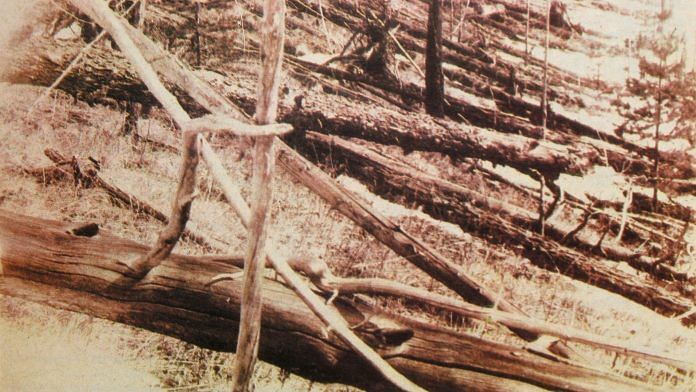Bengaluru: Exactly 111 years ago, Earth saw its largest asteroid impact in recorded history, an event that completely flattened 2,000 sq. km. of forest in eastern Siberia.
For the past five years now, astronomers and scientists have celebrated as well as raised awareness about asteroids, through a series of scientific events, on 30 June — the day of the Siberia Tunguska event as it’s known.
Asteroid Day was declared by the United Nations as a global day of education to raise awareness about asteroids opportunities and risks in 2016. The day was co-founded by astrophysicist and lead guitarist for Queen, Brian May, among others. The declaration was followed by the formation of Asteroid Foundation, now headquartered in Luxembourg.
What happened in Tunguska?
On the morning of 30 June 1908, a huge explosion occurred over the Russian Podkamennaya Tunguska river in a sparsely populated eastern Siberian Taiga forest and completely flattened 2,000 sq. km of area. There were no casualties, though.
The event technically occurred in the atmosphere: The large explosion was the ‘air burst’, as these explosions are called, of an asteroid over the forest.
There was no impact crater on the ground, but it is classified as an impact event.
Explosions in air occur when the angle of atmospheric entry of a meteor is very shallow, preventing it from directly hitting the earth. It travels farther through the atmosphere, building up heat and pressure, before eventually destroying itself in a shock wave.
Several such air bursts have occurred before and since.
Also read: NASA spacecraft finds signs that highrise-sized asteroid near Earth once had water
Russia event
Another one took place in Russia on 15 February 2013 — the Chelyabinsk event, which was captured on camera. A near-earth asteroid, roughly 20 m in diameter, zipped over the Ural region and grew 30 times brighter than the sun as it did. It was seen as far away as 100 km, and some people even reported experiencing heat from it.
It exploded over Chelyabinsk Oblast. The shock wave and resulting dust moved for over 25 km. No deaths were reported, but close to 1,200 were injured, mostly by flying glass.
The asteroid exploded with the energy of around 500 kilotonnes of TNT — approximately 30 times the amount of energy released during the Hiroshima atomic bombings.
Tunguska event impact
The Siberia Tunguska event released over 1,000 times the energy of the Hiroshima bomb, significantly higher than other known events in recorded history.
Nearly 80 million trees were estimated to have flattened by the explosion and the shock wave from it would have measured 5 on the Richter scale, capable enough of destroying several buildings.
It is believed that had it not been for the sparse population in the region, there would have been a high death toll.






